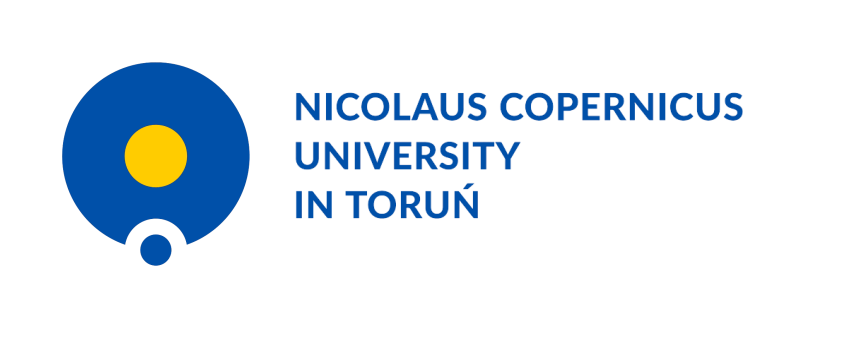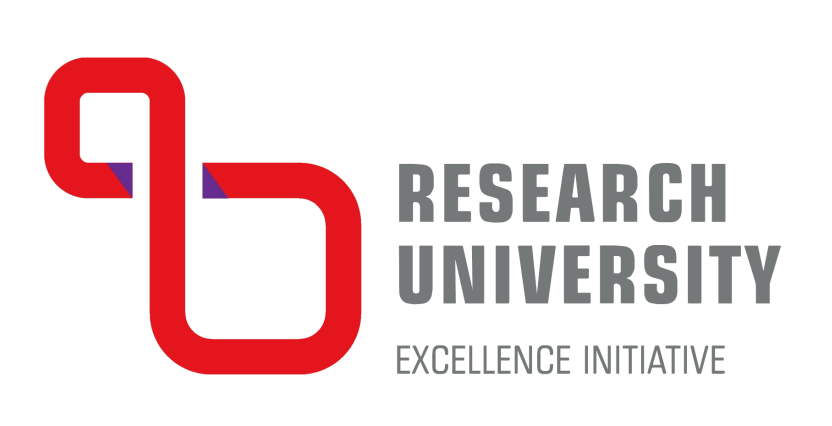Applied polymers, nanomaterials, membranes, and composites
Lider of the group – prof. dr hab Wojciech Kujawski
Emerging Field “Applied polymers, nanomaterials, membranes, and composites” team consists of the scientists at the different career stage, which is a perfect situation for the successful project accomplishment and further development of the younger staff members. The experience gained so far allows to plan the further career development of the group focusing both on the strong internal and international collaborations (sites.google.com/view/membranesncu/emerging-fields). The main scientific goal of our group is to launch new systems based on polymers and nanomaterials intended for the applications in modern technologies. The chosen systems are not described in the current literature, therefore, these new materials and their applications will potentially contribute to the innovation and competitiveness of the national and world’s economy.
By merging the novel material and membrane science, the materials with adjusted morphology for the controlled separation can be prepared. It is essential to modify the both, surface nano-architecture and bulk membrane structure. Dense and porous polymeric membranes with commercial and synthesized nanofillers will be prepared and evaluated. Furthermore, membranes containing fillers will be tested in pervaporation (PV), thermopervaporation (TPV), gas separation (GS) and membrane distillation (MD). Nanofillers, both pristine and additionally functionalized (e.g., by introducing functional groups, desired pore size in a structure cave, changing ligands, and/or core element), from the group of MOFs and COFs, will be synthesized and used as nano-enhancers for separations. The goal of this functionalization is to improve the affinity between membrane and separating system in gas and liquid separations. Membrane modification will be done also with the naturally occurring molecules, e.g. meristic or tannic acid, to tune hydrophobicity and roughness of materials. The hydrophobicity tuning and adhesive features adjustment will be done with ceramic nanoparticles, i.e. rare earth oxides (REMOs). Introduction of REMOs to the polymeric dope will be done also during the formation of electrospun membranes. Moreover, the research will be done in a strong collaboration with leading groups in France, Italy, United Arab Emirates, and Saudi Arabia.
Synthesis and characterization of graphene (GR) and its hybrids with metal oxides (MeOx) to form carbon nanomaterials (CNM) are also planned. New catalysts containing GR and selected MeOx will be synthesized for water splitting and hydrogen generation. A synthesis strategy will be developed, concerning high variability of MeOx. The research will also focus on 3D structuring of GR flakes, previously exfoliated from commercial graphite powder. The research on GR and its hybrids with MeOx in oxygen evolution reaction and hydrogen evolution reaction will be investigated. To confirm the applicability of the obtained catalysts in water splitting reactions, the electrochemical measurements are foreseen. New electrode materials not containing noble metals will be synthesized.
The research on the application of CNM in biological uses and in anti-icing science will be also studied. The group showed for the first time the influence of airborne hydrocarbons on droplet freezing. The occurrence of this phenomenon on new superhydrophobic and superomniphobic CNM-containing surfaces will be evaluated under the controlled atmosphere. Considering the new anti-icing materials, fluorine containing carbon nanohorn-based superomniphobic surfaces using Tetrafluorethylene-Hexafluorpropylene-Vinylidenfluoride (THV terpolymer) will be obtained. THV has not been used in anti-icing science yet, and since it contains more fluorine than PVDF, it should possess better anti-icing properties. The new surfaces will be obtained based on maskless photolithography for THV/CNM mixtures. Carbon nanohorns, graphane (showing larger hydrophobicity than GR), and carbon nanoonions will be studied. Novel anti-icing solids will be obtained also by using electrospinning. THV polymer will be used to get new CNM-containing polymer mats by a combined electrospinning/spraying method. Mats should possess self-healing properties based on the reconstruction of van der Waals/π-π interactions between CNM. It is important because during freezing, due to low Young modulus of mats, they can be mechanically damaged by frozen droplets. Sponges obtained using THV and CNM will be a new group of anti-icing solids. Sponges will be obtained, based on mechanochemistry by a mechanochemical powdering of THV with ammonium carbonate and CNM, followed by heating. The application of CNM for improvement the properties of PVDF membrane is also an important topic of the research. Carbon nanohorns were used so far, however, a completely new carbon nanomaterial called nanographorn was just obtained and the application of this material in composites with PVDF is foreseen. The research will be done in a strong international collaboration with research groups from Spain (Oviedo), UK (Cambridge), and Japan (Chiba, Kyushu).
The design of polymer films with biological or photosensitive properties for industrial, biomedical, and packaging applications is an example of preparation of active and/or intelligent materials. The research will focus mainly on biopolymers (ecological alternatives to synthetic polymers), such as starch, alginates, and chitosan. They are biodegradable, non-toxic, and biocompatible. Owing to the presence of functional groups in the structure of these macromolecules; they can be modified in various ways to get desired properties. These biopolymers will be modified by introducing various agents, such as aromatic-heterocyclic dyes (fluorescein, rhodamine, eosin, and rose bengal) which will result in the fluorescent properties. Photosensitive low molecular weight organic compounds are already used in photonics, lithography, solar cells, fluorescence imaging, and medicine; however, there are no such materials for low-cost disposable products.
Another modification is the introduction of natural substances (caffeic acid, quinic acid, essential oils, polyphenols) to biopolymeric films aiming at producing materials with antimicrobial and/or antioxidant properties. Such films are used as packaging for perishable food and edible coatings covering the product with a thin layer, masks for skin disorders, scar dressings, and carriers of active substances. The nano/submicroscale coordination compounds (based on central ruthenium and manganese cations) will be also applied as polymer modifiers to generate biological activity of composites. The work will concern changing coordination compound structure and redox properties by a systematic replacement of coordinated ligands by stronger nucleophiles. The research will be done in collaboration with groups in India (University of Burdwan) and Germany (University of Erlangen-Nuremberg).
Prof. dr hab. Wojciech Kujawski – was born in Ostróda. As a laureate of the Chemical Competition organized by prof. Antoni Swinarski, he began his studies at the Faculty of Mathematics, Physics and Chemistry of the Nicolaus Copernicus University, majoring in applied chemistry. After graduation, he started a doctoral project related to non-equilibrium thermodynamics of ion exchange membranes, under the supervision of prof. Anna Narębska. He obtained the degree of DSc in Poland (in 2008 – for the research related to the separation of liquid mixtures using the vacuum pervaporation technique) and HDR degree in France (in 2011 – for the research describing the equilibrium and transport properties of ion-exchange membranes in contact with water-organic mixtures). In 2020, he obtained the title of full professor. Since 2017, he is the Head of the Department of Physical Chemistry and Physicochemistry of Polymers, Faculty of Chemistry, NCU in Toruń.
Scientific activity of prof. Kujawski is related to the equilibrium, separation and transport properties of polymer and ceramic membranes, as well as the modification of polymer and ceramic membranes in order to obtain materials with new or improved properties. He has published over 190 scientific papers (Scopus), actively collaborating with many foreign centers, e.g. in France, Sweden, Slovenia, Czech Republic, Spain, United Arab Emirates, and Ukraine. The results of the work have been cited in publications by other authors (CI>4500, h=42 – Scopus), as well as presented at national and international scientific conferences. Prof. Kujawski was awarded numerous times by the Rector of the Nicolaus Copernicus University in Toruń for his achievements in scientific research and organizational activities. In the period 2014-2020 he was the Chairman of the Council for Innovation and Implementation of the Nicolaus Copernicus University. He is a co-founder of the Polish Membrane Society, being its President in the terms of 2015-2019 and 2019-2023. It also belongs to the European Membrane Society. Prof. Wojciech Kujawski promoted 6 PhDs and supervises another 2 doctoral students. He also implements national and international grants from the National Science Centre, the National Center for Research and Development, SI (Swedish Institute), and NATO. During 2020-2022, he coordinated the EF “Polymer sciences and multifunctional nanomaterials”.


 ul. Gagarina 7, 87-100 Toruń
ul. Gagarina 7, 87-100 Toruń